| |
|
|
| |
Summer stunner.
Wed 28th January, 2015
|
|
|
|
  The past week or so has seen some of the best summer action on the river this year. We experienced plenty of summer running fish last January but 2015 is turning out to be even better. The past week or so has seen some of the best summer action on the river this year. We experienced plenty of summer running fish last January but 2015 is turning out to be even better.
A few weeks ago there were pods of smaller rainbows moving up ... fish in the two to three pound bracket but this week there have been some excellent rainbows and browns caught.
I had an afternoon session with Glenn Goode and lost a couple of browns and good rainbows before we eventually slipped the net under Glenn's cracking six pound { weighed } hen above.
With the fishing as good as it is I'm amazed there's so few anglers around. But those who are making the effort are generally doing ok.
There are good numbers of fish throughout the river. Have a squiz from any of the lookouts above Admirals, Cattle Rustlers or Duchess next time you're passing ... and hardly anyone fishing.
Fish that spawned earlier in the year have recovered well, no surprise with the amount of food that's around. If you're wading near the bank look at how much insect life you disturb as you brush past the bank-side vegetation.
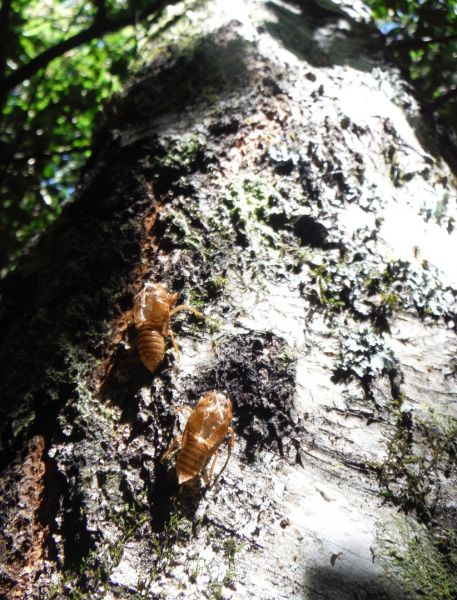 The one we're all focused on at present is the cicada. Although noise levels are increasing a better indicator of the numbers emerging are the discarded husks or exuviae left clinging to the trees. This time last year the trunks and ground below host trees were covered in nymphal cases but we're nowhere near those numbers ... yet. The one we're all focused on at present is the cicada. Although noise levels are increasing a better indicator of the numbers emerging are the discarded husks or exuviae left clinging to the trees. This time last year the trunks and ground below host trees were covered in nymphal cases but we're nowhere near those numbers ... yet.
There's still a lot to learn about the life cycle of these big insects but the best emergence seems to take place when we get a combination of prolonged fine weather during January and early February with regular light rain in between.
With hardly any rain so far this year the ground moisture content is low and the soil dry and hard which makes life tough for any cicada nymphs trying to burrow up from their underground chambers.
I was going to say that if this continues this years cicada action could fizzle out and become a bit of a non-event but we're experiencing some heavy showers as I'm writing this.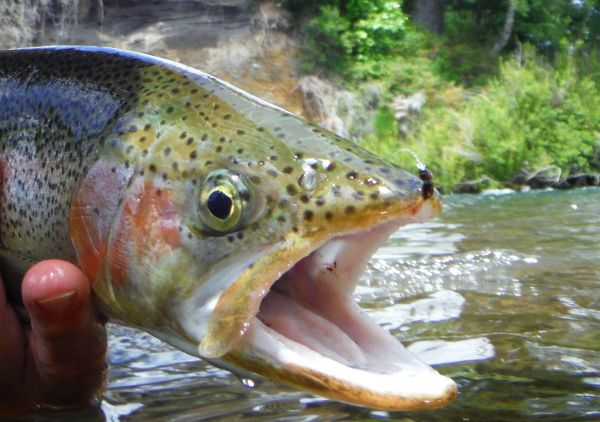 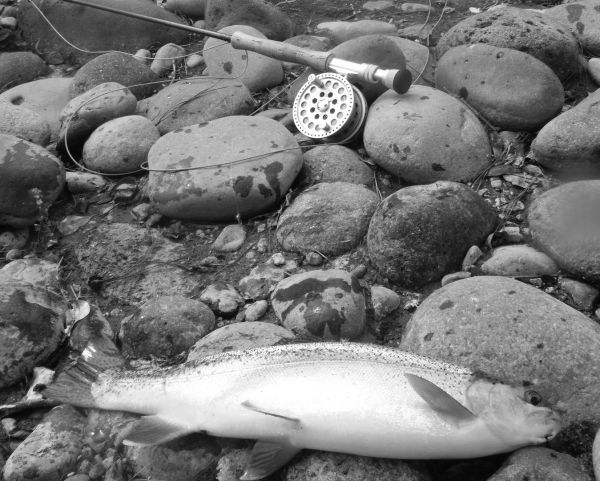
I've had a few fish come up for the big indicator dry but they've just nudged it, turned away and nailed one of the dropper nymphs on the way back down.
I've had no luck at all fishing cicada patterns on their own.
But if we get that subtle mix of fine weather and showers just right, then the cicada numbers will grow and more of them will end up in the river.
The fish will quickly notice and the fun will start.
In the meantime if you want some dry fly action get on the river around 7.30pm on a calm evening and fish into dark. 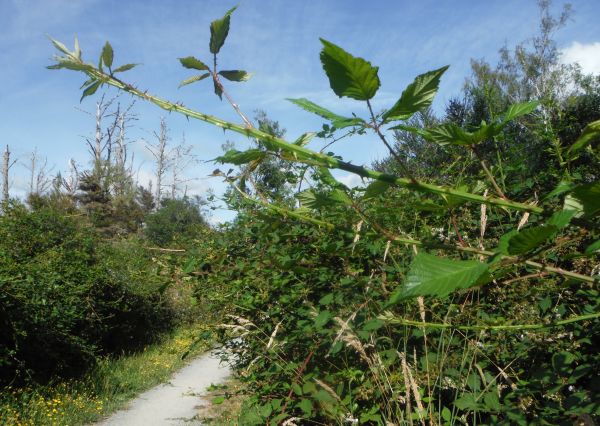
One thing I'm sure you'll have noticed as you make your way along the access tracks is the way the blackberry has taken off this year. I don't think I've ever seen it so bad. Some of the middle river tracks are virtually impassable and my new piece of fishing kit is a pair of secateurs. When you're trying to get through this stuff make sure your drag is locked up tight and the flies secured properly in the keeper ring, otherwise you'll get in a right ole mess.
It isn't only anglers who have to watch out. More and more cyclists use the purpose built tracks and in some places, even near town, the thorn covered stems spread right across them.
Blackberry thrives in warm dry weather and some of the canes are well over ten feet long. When you have the plants either side of a track especially those that aren't used often it doesn't take long before these stems "shake hands" forming an impenetrable barrier which provides a "trellis" for other plants to clamber over. In a few places if you didn't know there was a track there you'd never find it. I'm sure these angler access tracks will eventually get re-cut but once its established wild blackberry is one of the most difficult weeds to control. It spreads and grows from nodules on its underground rootstock and in the wild is probably impossible to eradicate completely ... so in the meantime enjoy the pie.
 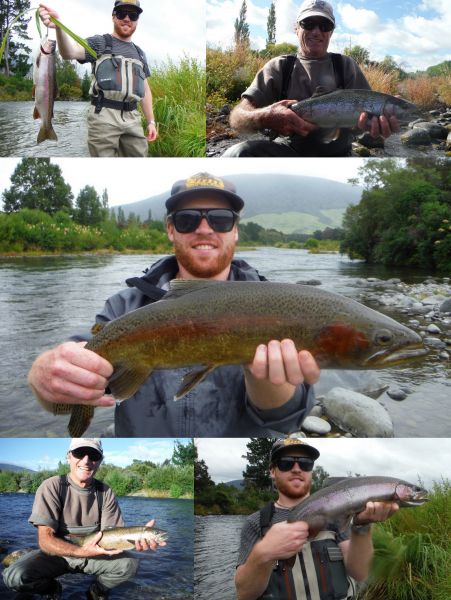 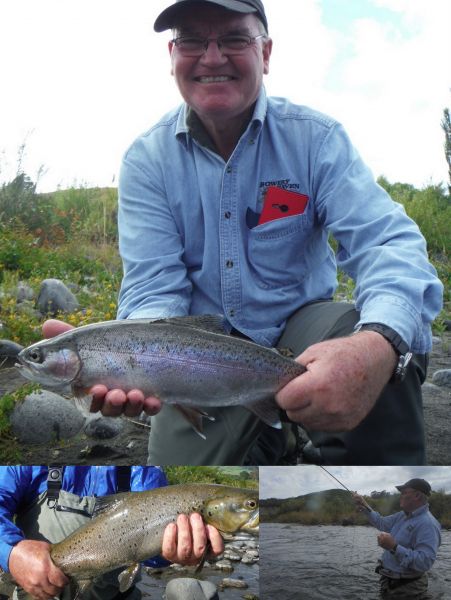 I've got so many great images taken on the river since the last report its going to be impossible to fit them all in. Nick Koppel above chasing a nice fish along the Island Pool and pictured left with Dad Greg and some of the others they landed. Bruce Robertson is a new recruit to fly fishing but that didn't stop him catching some rainbows and a brown on his first visit to the Tongariro. I've got so many great images taken on the river since the last report its going to be impossible to fit them all in. Nick Koppel above chasing a nice fish along the Island Pool and pictured left with Dad Greg and some of the others they landed. Bruce Robertson is a new recruit to fly fishing but that didn't stop him catching some rainbows and a brown on his first visit to the Tongariro.
Besides the huge numbers of aquatic flies around the river there seem to be a lot more flying insects generally this year. At first I thought I might be imagining it but there have been references to it in the media. For a few years now pest controllers have reported an annual increase in house flies ... particularly the "Lesser House Fly". They're the little ones you often see indoors that never land any where and just fly around the room all day. Despite this apparent constant activity they still manage to crap all over the walls and ceiling so they must touchdown at sometime. It appears there has been a big jump in their numbers, especially in North Island ... lucky us. Some experts blame this population spike on "green living" and the trend towards recycling with things like compost bins becoming more common in back gardens.
Last year if you remember the big problem was wasps ... they were everywhere and were a real nuisance. Several large nests were reported along the river and we had a large colony somewhere near our house which we never did find. Like house flies they love the smell of meat, one of the reasons they're such a pain when your having a BBQ or picnic. Good hygiene practice when handling and preparing meat will help and if you have pets don't forget to cover up any food left in their bowls. Thankfully, so far this year there don't seem to be as many of them.
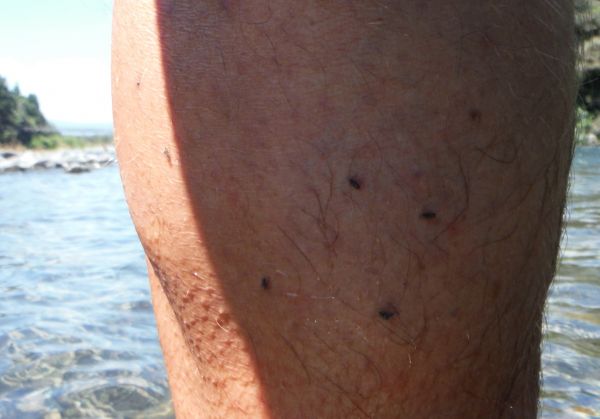
I wish I could say the same about those bloody sand flies. Most of us enjoy wet-wading on a warm sunny day but everyone I talk to along the river is complaining about them.
I thought I'd become immune to the bite of these little critters after living on the coast for eight years but this summer even my finger nails are itching after being bitten.
The biggest sand fly populations always occur when you have a combination of running water and bush. But you'll also find them near beaches, lake margins and swamps ... so most of New Zealand!
Just about the only place they're not a such a big problem is the drier central east coast of South Island, roughly between Christchurch and Dunedin.
I experienced South Islands' notorious west coast population of sand fly while fishing down there a few years ago, and fair play whenever I went anywhere near a river they lived up to their reputation and chomped on every bit of exposed skin.
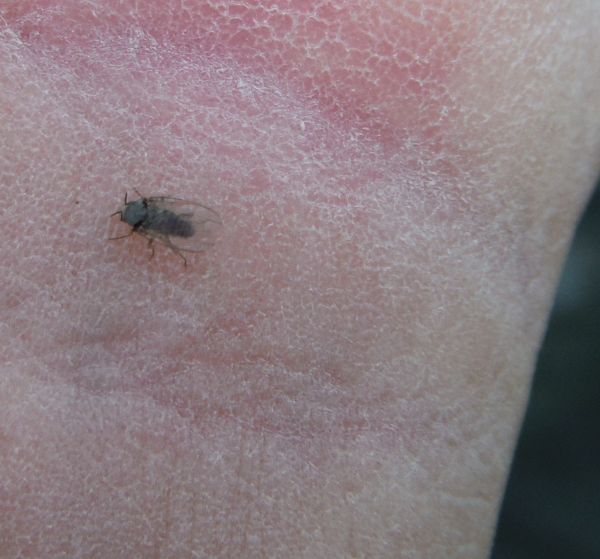
I don't know why but wet wading the Tongariro this year they're driving me nuts again.
The males are vegetarian, feeding mainly on plant juices, so its only the females that bite. And as far as she is concerned most warm blooded creatures, including you and I are fair game.
Female sand flies need the blood to help produce eggs and inject their victims with an anti-coagulant and a protein that help digest the blood. These cause an allergic reaction and the intolerable itching that most of us suffer when we have a run in with sand flies.
People who regularly spend a lot of time outdoors can build up a tolerance to the bite, almost to the point where they don't even notice it ... and until recently I thought I had.
During the current warm spell I've substituted my waders and boots for shorts and wading sandals and paid the price for not covering up. Some of the advice out there will suggest that sand flies are at their biting best at dawn and dusk and are particularly active on overcast days, where ever possible avoiding bright sunshine. Well ... that's a load of cobblers, I took these pics around lunch-time on a hot sunny day and they were queuing up to eat my leg. There are dozens of recipes for home made repellents and all kinds of potions to soothe sand fly bites ... I've listed some of the more popular ones below.
REPELLENTS
* Olive oil features in many of the home made concoctions usually mixed with things like Dettol or Jeyes Fluid.
* Regular application of commercially available Deet based products are also recommended and will typically last a few hours.
* 19th century gold miners on the West Coast of South Island rubbed a lump of rancid bacon on exposed skin to keep sand flies {and every other living thing} at bay ... but you'll probably want to give that one a miss.
* Baby oil with eucalyptus and lemon juice is another mixture worth trying.
* The most often suggested commercial repellent is Mosi-guard. This is a natural, Deet free product available as a stick, spray, cream or roll-on which also helps soothe the bites.
BITE REMEDIES
 * I've had good success with the old favorite, white vinegar. Not only does it make your chips taste better but it does seem to soothe the itching and neutralize the toxin. I haven't tried it ... but wine is also recommended. Drink three bottles and apparently the itching stops. * I've had good success with the old favorite, white vinegar. Not only does it make your chips taste better but it does seem to soothe the itching and neutralize the toxin. I haven't tried it ... but wine is also recommended. Drink three bottles and apparently the itching stops.
* Tea tree oil will help with the itching and act as a repellent.
* One of the strangest remedies I came across was the glass cleaner Windex. This counteracts the effects of the bite and gives you a streak-free finish!
Of course the best course of action is not to get bitten in the first place. But in order for any of the repellents to work you must apply it to every inch of exposed skin because unlike mosquito's, sand flies are not deterred just by the smell. Thats why most of the effective home made recipes are mixed with some sort of oil which forms a protective layer, If you miss a bit they'll find it, so I'm afraid the only sure way to beat the little buggers is to cover up. Sand flies have tiny mouth-parts that can't penetrate even the thinnest fabrics so light weight, quick dry fishing clothing is the way to go ... unless you'd prefer to smear yourself from head to toe in rotting pig fat!
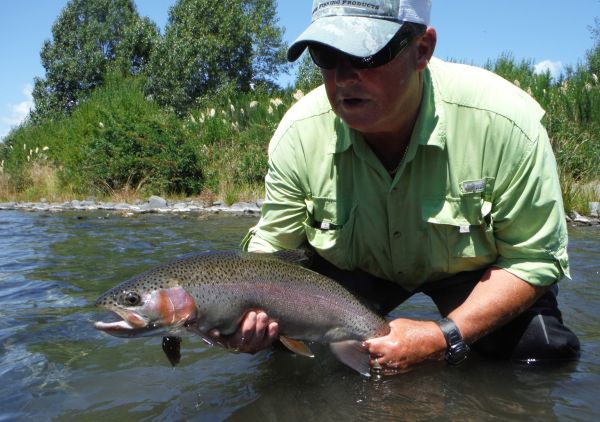
A showery outlook for the next day or two with much cooler temperatures towards the weekend. And it looks as if we're going to get that rain next week with some heavy falls in places. There are some good rainbows and browns around and you would expect these to figure in the reports more often from now on.
Tight lines guys
Mike |
|
|
| Back to Top |
|
|
|
|
|
|
|